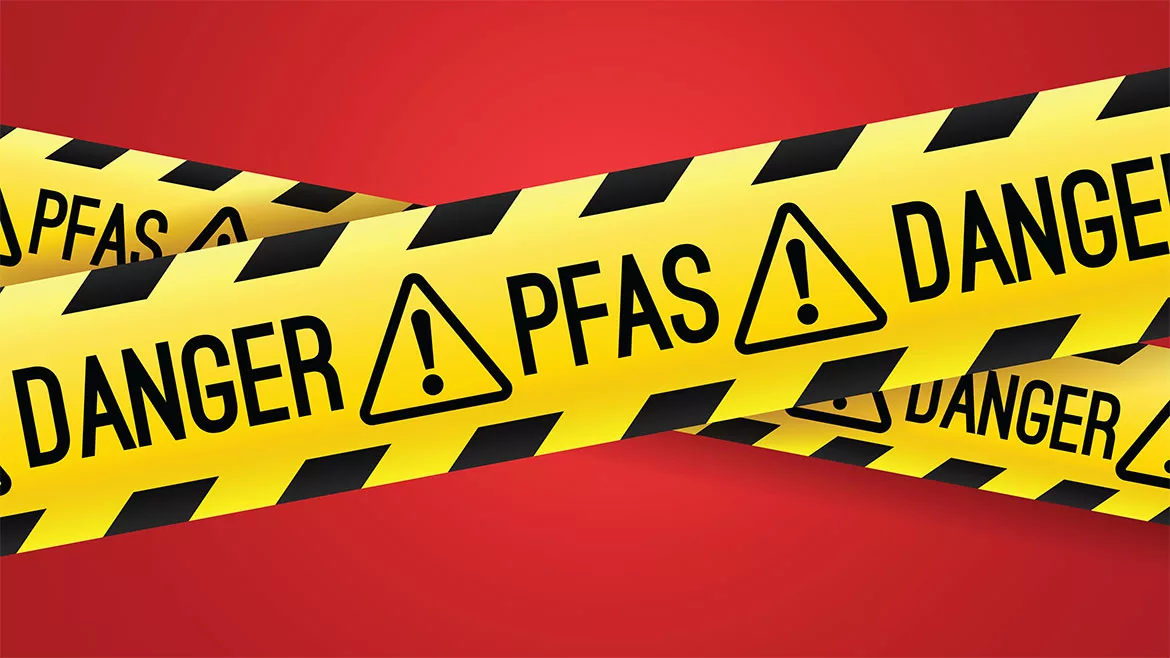Guard on Compliance | Misty Guard
PFAS in the EU: A look at the EU's transparent regulatory process
Two possible pathways.

Image Source: filo / DigitalVision Vectors / Getty Images Plus
As we enter 2025, the new year presents an opportunity for renewal and a chance to embrace new experiences. The transition into a new year encourages us to leave behind what no longer serves us, making way for future growth and possibilities.
In November 2024, the European Chemicals Agency (ECHA) and authorities from Denmark, Germany, the Netherlands, Norway and Sweden released an update on the progress of the REACH (Registration, Evaluation, Authorisation and Restriction of Chemicals) regulation proposal for the restriction of per- and polyfluoroalkyl substances (PFAS) in the European Union. The January 2023 REACH PFAS proposal aimed to ban PFAS but allow continued use for specified timeframes until alternative materials are available.
For a refresher on per- and polyfluoroalkyl substances, known as PFAS and "Forever Chemicals," I invite you to review my previous columns, PFAS: A Growing Concern, Forever Chemicals in the News, and Understanding United States (U.S.) State-Level PFAS Legislation.
EU's scientific evaluation process
Following the January 2023 REACH PFAS proposal, ECHA's Risk Assessment (RAC) and Socio-Economic Analysis (SEAC) committees are conducting a scientific review and evidence-based evaluation of the REACH PFAS proposal with third-party stakeholder input. The RAC and SEAC committees determined a sector-based approach achieves the appropriate level of scientific evaluation review of the specificities and different uses, risks, and restriction options of over 10,000 substances across more than 14 sectors
U.S. feedback raises concerns for plumbing and mechanical products
In 2023, over 5,600 scientific and technical public comments from interested parties were submitted. The RAC and SEAC used the public comments to update and improve PFAS information, identify previously unnamed uses and inform the scientific evaluation process. A newly identified use with potential impact on plumbing and mechanical products is sealing applications (e.g., gaskets, pipe lining).
This comprehensive approach to PFAS regulation demonstrates the need to address the potential risks associated with these persistent chemicals while balancing economic and practical considerations.
U.S. organizations or individuals submitted 191 comments on the January 2023 REACH PFAS proposal. Fluoropolymers, a group of PFAS used in drinking water, food and beverage, water systems and wastewater industry products, garnered significant U.S. stakeholder interest. Key takeaways from the U.S. commenters are:
- Exclude fluoropolymers and fluoroelastomers from the REACH PFAS regulation;
- No known alternatives to fluoropolymers can provide the desired durability, chemical resistance, temperature resistance and surface tension;
- No direct substitutable non-PFAS materials with the same or at least approximately similar physical and chemical properties are available;
- Fluoropolymers are different from the other families of PFAS with no scientific, economic or social basis to justify regulating them in the same way as all the other PFAS chemicals;
- Impacts of a REACH PFAS ban on many critical uses in the water and wastewater industry have not been identified and assessed in the Annex XV report, which is a significant limitation of the report and inconsistent with evidence-based decision-making;
- A REACH PFAS ban would lead to potential substitution with less suitable materials, which could lower water quality, subsequently harm food safety and public health, and likely increase the cost of manufacturing; and
- A REACH PFAS ban will create technical barriers to trade by adding undue costs and complexity to sourcing elastomeric components.
Moving away from a pfas ban or phase-out
The January 2023 REACH PFAS proposal considered two pathways:
- A complete ban
- A specified timeline phase-out ban to allow continued PFAS use while minimizing environmental impacts for specified timeframes until alternative materials are available
However, based on the additional information from the 2023 public comments, ECHA is considering other restriction options, particularly for uses where a ban might have disproportionate socioeconomic impacts, such as in drinking water, food and beverage, water systems and wastewater industry products. The alternative options being considered for fluoropolymers are:
- Conditions for continued manufacture, placing on the market, or use of PFAS instead of a complete ban; and
- Conditions to allow continued PFAS use while minimizing environmental impacts until alternative materials are available without specified timeframes
PFAS requires balancing public health and safety impacts
This comprehensive approach to PFAS regulation demonstrates the need to address the potential risks associated with these persistent chemicals while balancing economic and practical considerations. The significant stakeholder engagement highlights the complexity of regulating a diverse group of substances used across multiple sectors and the importance of stakeholder input in shaping effective and appropriate regulatory measures with the potential to affect public health and safety, such as in drinking water, food and beverage, water systems and wastewater industry products.
What can you do?
The ECHA's work will continue throughout 2025, with additional opportunities to provide public comment. For those seeking assistance in providing public comments, call us at Regulosity. Our team specializes in detailed and personalized assessments to help you navigate and engage with the complexities of the regulatory framework.
Looking for a reprint of this article?
From high-res PDFs to custom plaques, order your copy today!










